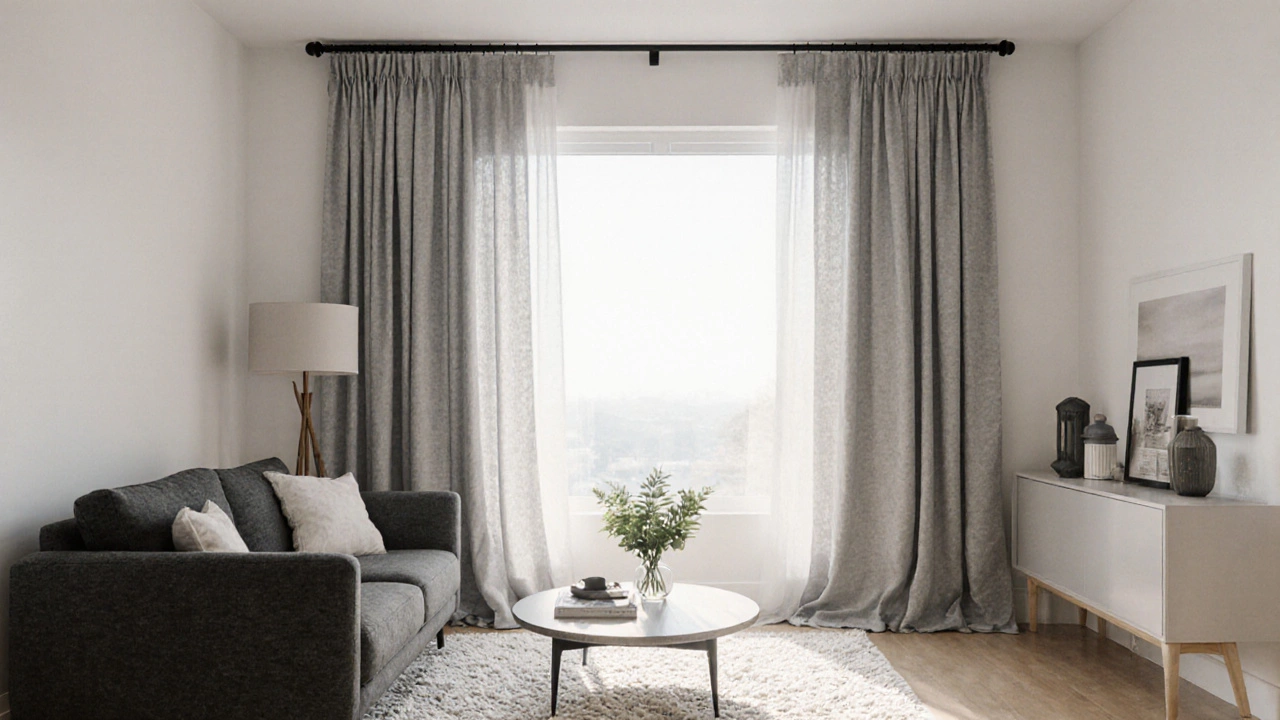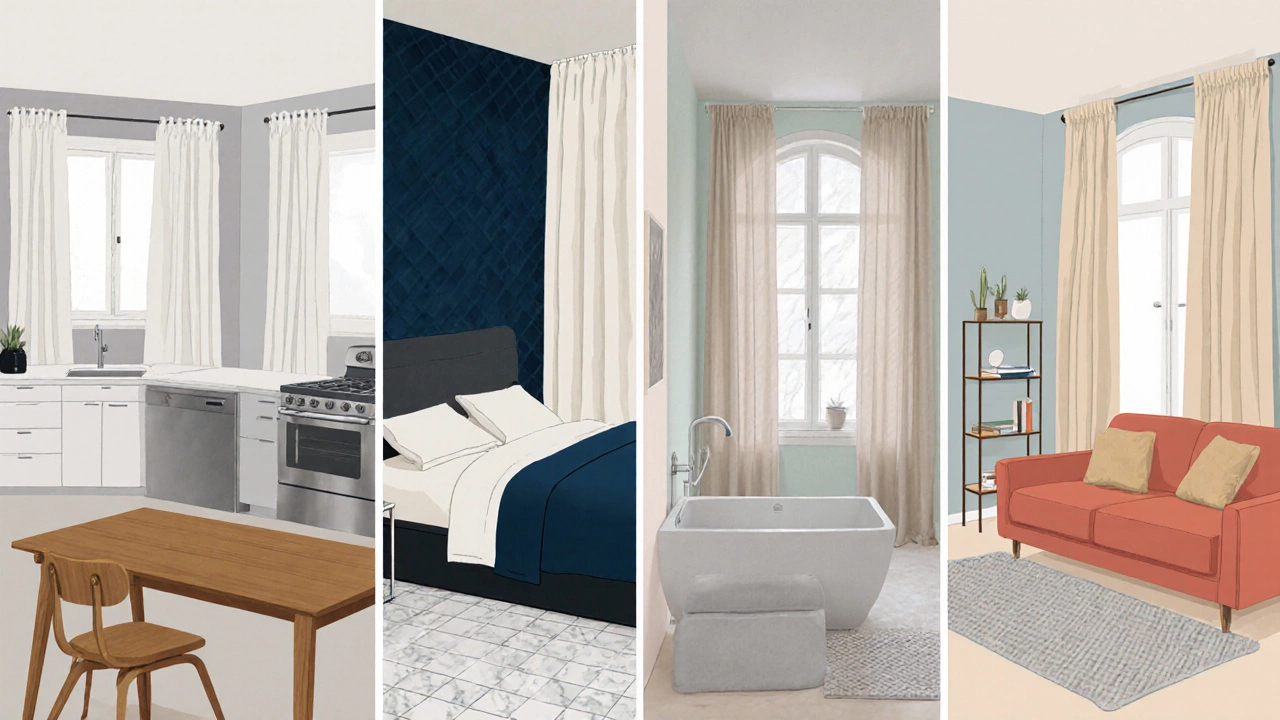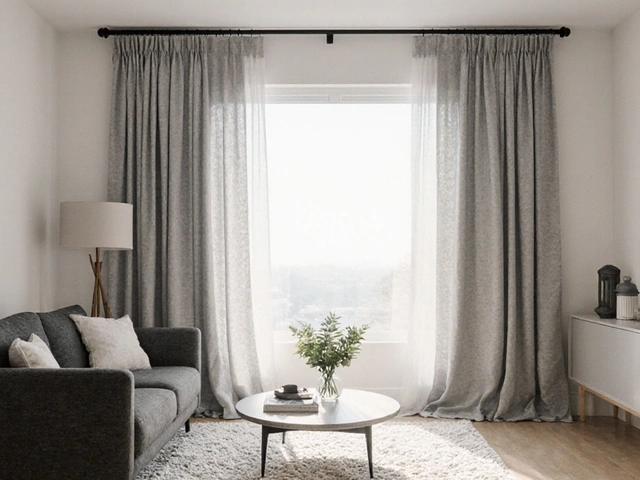Best Neutral Curtain Colors That Match Any Room

Room-Specific Curtain Color Advisor
Recommended Color
When picking window dressings, Curtains are fabric panels that hang from a rod to control light, privacy, and style. The biggest dilemma most homeowners face is choosing a hue that doesn’t clash with existing furniture, paint, or accessories. Below you’ll discover the few colors that truly go with everything, why they work, and how to pair them with different rooms and styles.
Key Takeaways
- White, beige, light gray, navy, and ivory are the most versatile curtain colors.
- Consider the room’s natural light, wall color, and furniture palette when selecting a shade.
- Texture and fabric weight can change a neutral color’s impact without needing a new hue.
- Mixing patterns with a neutral base keeps the look fresh and adaptable.
- Invest in neutral curtains for long‑term flexibility across redesigns.
Why Neutral Colours Are the Safe Bet
Neutral tones sit in the middle of the color wheel, meaning they neither dominate nor compete with other shades. This "mid‑range" quality allows them to blend seamlessly with bold accent pieces or muted décor. For example, Beige reflects a warm, earthy vibe that complements wooden flooring and brass fixtures, while Light Gray offers a cooler, modern feel that pairs well with steel appliances and charcoal walls.
Top Five Curtain Colours That Pair With Anything
Below is a quick rundown of the five hues that consistently win the versatility test.
- White - Brightens rooms, enhances natural light, and works with every color family.
- Beige - Adds warmth without overwhelming, ideal for coastal or rustic themes.
- Light Gray - Provides a contemporary edge, perfect for minimalist or industrial spaces.
- Navy - A deep, soothing anchor that works especially well in bedrooms and living rooms.
- Ivory - Softens a room while maintaining a sophisticated look.

How Light Affects Your Curtain Choice
Even neutral hues shift dramatically under different lighting conditions. In a sun‑filled kitchen, White curtains will appear almost translucent, keeping the space airy. Conversely, the same curtains in a low‑light bedroom may feel stark; swapping to Ivory adds a gentle glow without sacrificing privacy. When rooms have limited natural light, consider fabrics with a subtle sheen-linen‑blend or brushed cotton-to reflect what little light is available.
Matching Curtains to Specific Rooms
Each room has its own functional and aesthetic demands. Use the guide below to pair the universal colours with the most common spaces.
| Room | Recommended Colour | Why It Works |
|---|---|---|
| Living Room | Light Gray | Provides a modern backdrop and balances both vibrant sofas and muted rugs. |
| Bedroom | Navy | Creates a calming, cocoon‑like atmosphere while still feeling luxurious. |
| Kitchen | White | Maximises brightness and complements stainless steel appliances. |
| Bathroom | Ivory | Softens moisture‑prone spaces and harmonises with marble or stone tiles. |
| Home Office | Beige | Reduces eye strain while fitting both wood desks and metal shelving. |
Fabric Matters as Much As Colour
Texture can turn a plain White curtain into a statement piece. Heavy linen adds dimension, while sheer voile lets light filter through gently. If you love the look of Gray but worry about it feeling "cold," a velvet finish introduces warmth and depth without a colour change. Choose the fabric based on function-privacy, insulation, or decoration-and you’ll extend the life of your chosen hue.
Adding Patterns Without Losing Versatility
Striped or botanical prints anchored in a neutral base are the sweet spot for pattern‑loving homeowners. For instance, a Beige curtain with thin navy stripes offers visual interest while staying adaptable. The rule of thumb: keep the background colour neutral, limit pattern scale to no larger than a coffee table, and use the same accent colour elsewhere in the room (pillows, rugs, artwork) for cohesion.

Budget Tips: Buying Versatile Curtains Without Overspending
Neutral curtains often go on sale because they’re evergreen stock for retailers. Look for off‑season clearances-January for summer collections, August for winter lines. Measure accurately; a slightly longer panel can be hemmed at home, saving you from buying a custom‑size premium. If you’re undecided, purchase a simple White panel and add a removable liner or tie‑backs in a contrasting hue for temporary flair.
Maintenance: Keeping Neutral Curtains Fresh
Neutral fabrics show dust less than darker shades, but they can yellow over time. Regular vacuuming with a low‑suction brush head removes surface particles. For linen or cotton, a gentle cold‑water wash with mild detergent preserves colour integrity. If you notice fading on Ivory, a quick steam iron restores brightness without harsh chemicals.
Putting It All Together: A Step‑by‑Step Decision Flow
- Identify the room’s dominant colour palette (walls, flooring, furniture).
- Assess natural light levels - bright, moderate, or low.
- Choose a neutral shade that complements the light (White for bright spaces, Ivory for low‑light rooms).
- Select fabric type based on privacy and insulation needs.
- Decide if you want a pattern; keep the background neutral and the pattern subtle.
- Measure windows, purchase, and install using a sturdy rod that matches the room’s metal or wood finish.
Frequently Asked Questions
Can I use the same curtains in multiple rooms?
Yes. Neutral colours like white, beige, and light gray are deliberately designed to be multipurpose. Just ensure the fabric’s thickness matches each room’s privacy and insulation requirements.
What’s the difference between sheer and blackout curtains in neutral shades?
Sheer curtains let daylight filter through, keeping spaces bright and airy, while blackout curtains block up to 99% of light, ideal for bedrooms or media rooms. Both can be found in the same neutral palette, letting you mix‑and‑match based on function.
Will neutral curtains clash with colourful furniture?
Generally no. Neutral curtains act as a soothing backdrop, allowing bold sofas, rugs, or artwork to stand out. If the furniture is extremely saturated, consider a subtle undertone (e.g., a gray curtain with a hint of blue) to tie the room together.
How do I prevent curtains from fading in direct sunlight?
Use UV‑blocking liners or choose fabrics with built‑in sun‑resistant treatments. Rotate curtains periodically so the same sections aren’t constantly exposed.
Is it better to buy ready‑made or custom‑size neutral curtains?
Ready‑made curtains are cheaper and come in standard widths that fit most windows. Custom sizes are worth it when you have unusually tall windows or want a floor‑to‑ceiling look without hemming.
Choosing the right curtain colour doesn’t have to be a guessing game. By focusing on timeless neutrals-white, beige, light gray, navy, and ivory-you gain flexibility for future redesigns, keep maintenance simple, and ensure your windows always look pulled together. Start with a single versatile shade, experiment with texture, and watch how it transforms every corner of your home.
